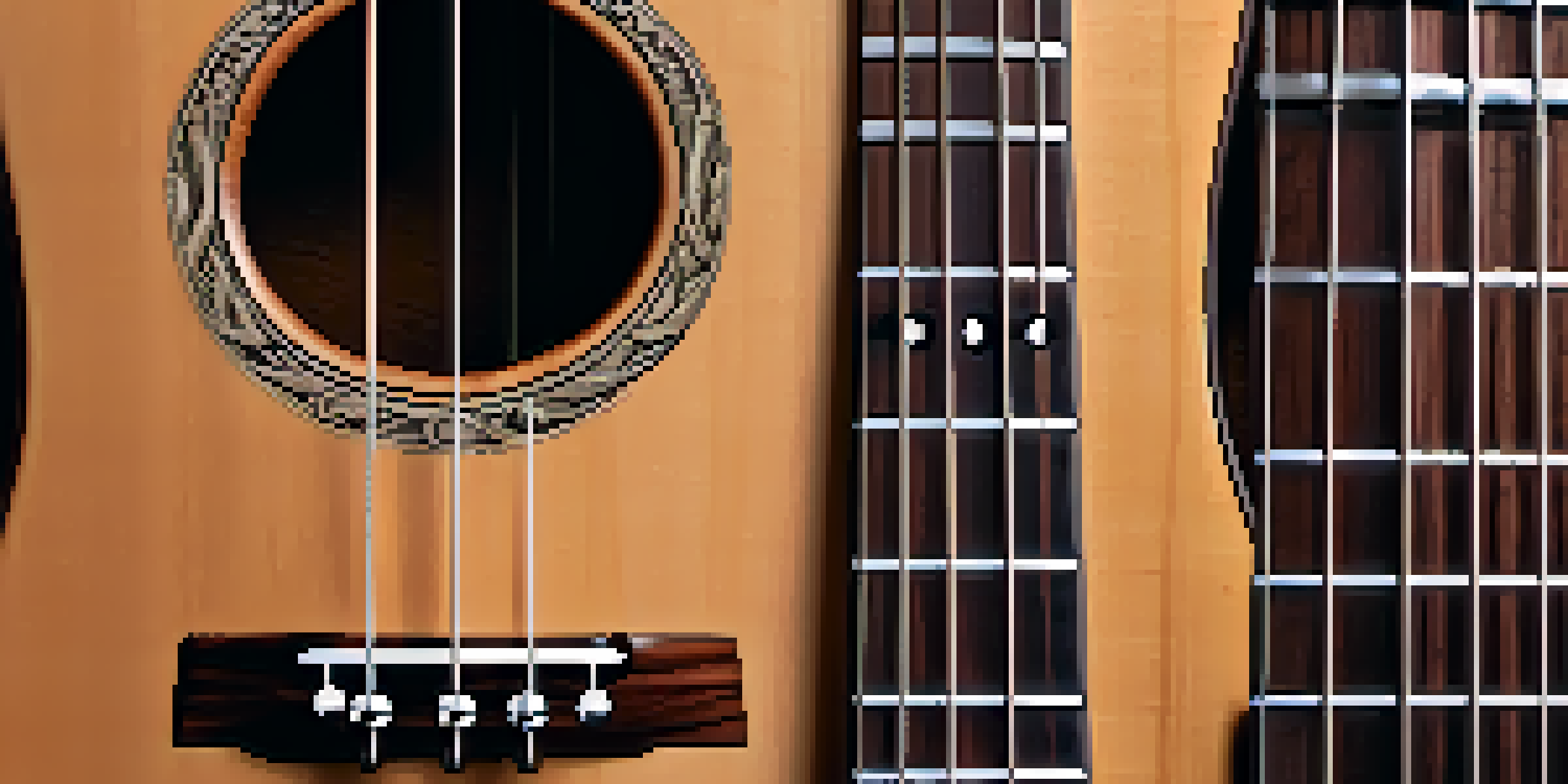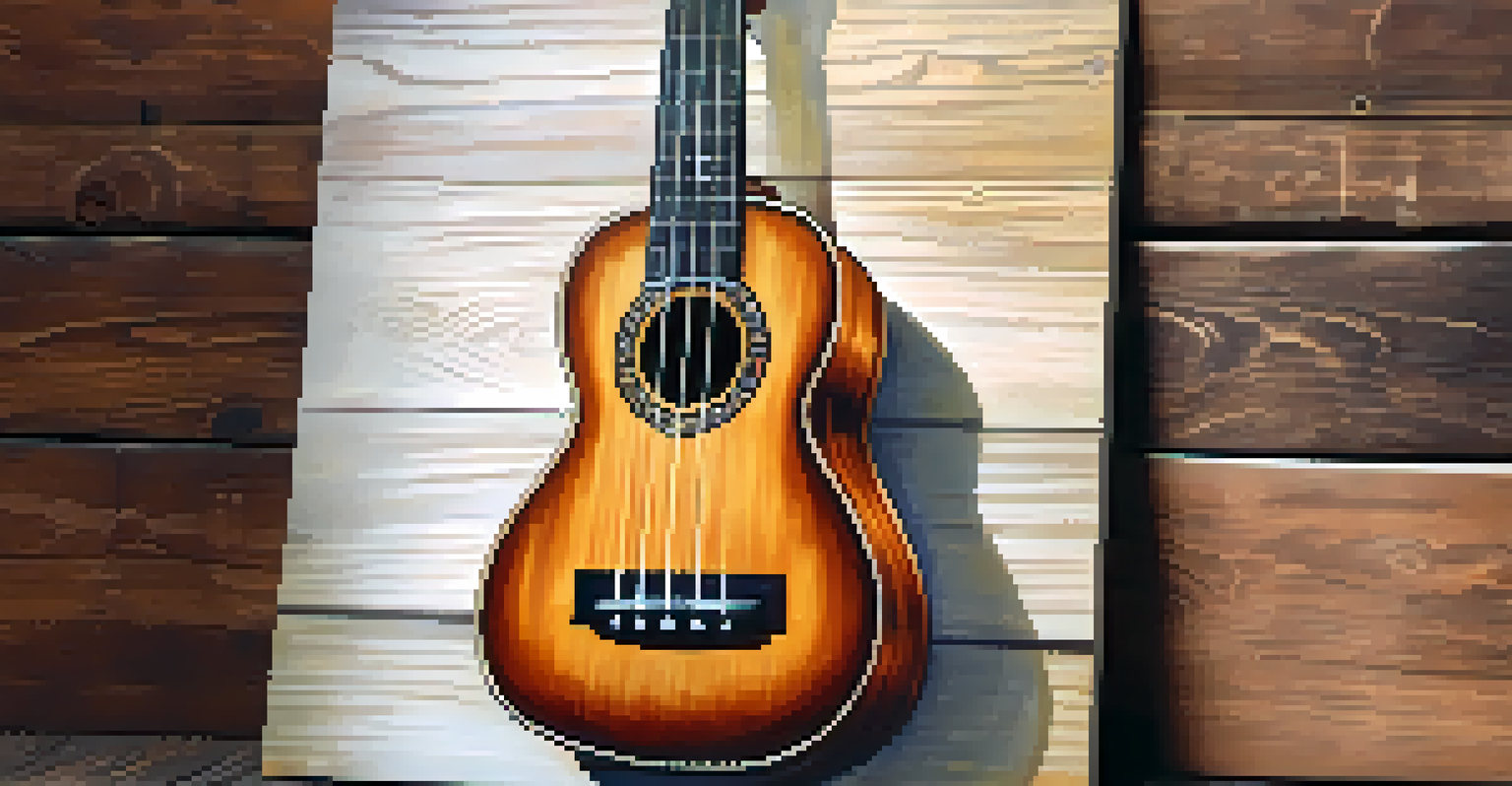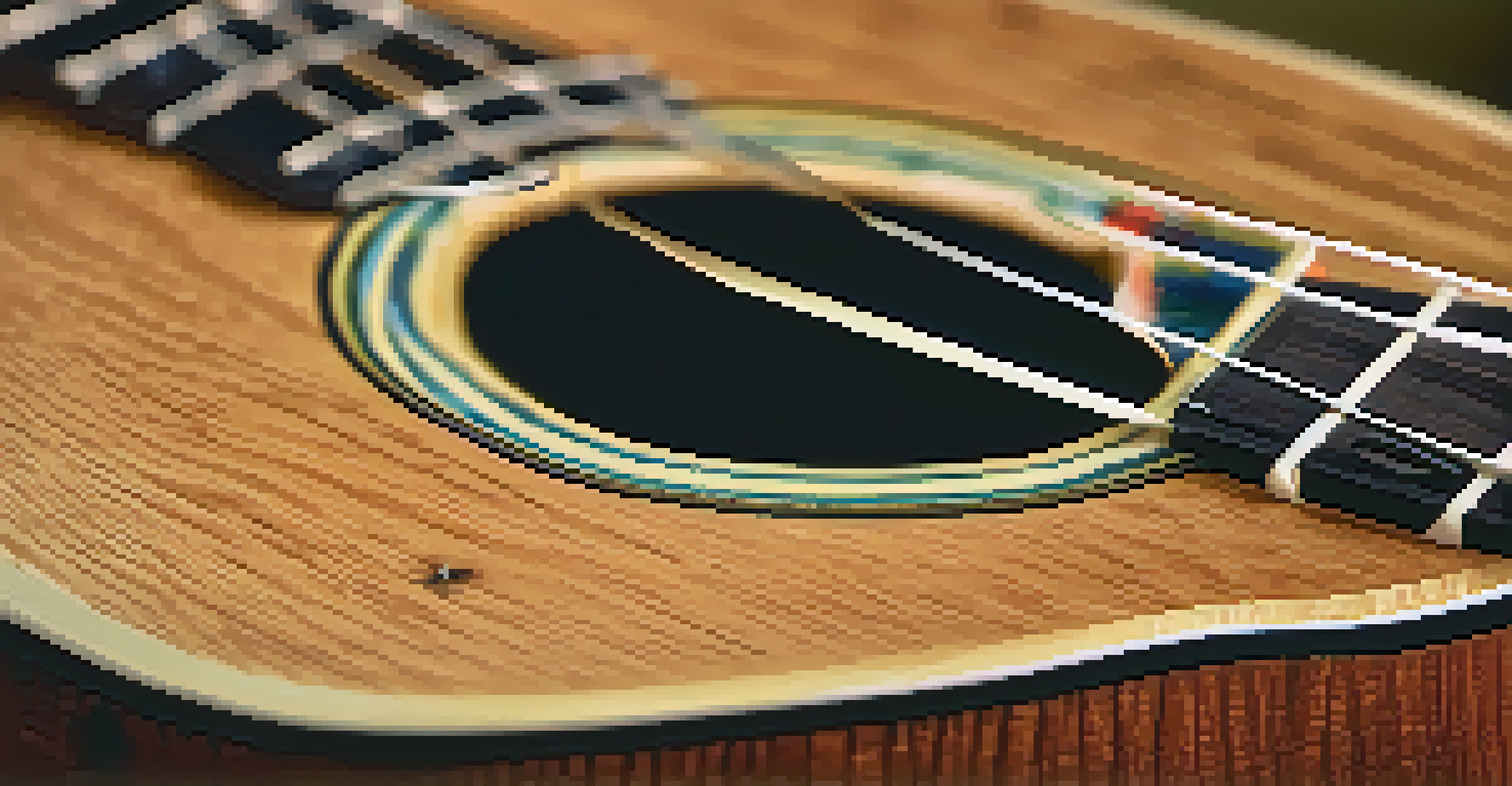Crafting the Neck: A Vital Part of Your Ukulele

Understanding the Ukulele Neck: Its Role and Importance
The neck of a ukulele is more than just a long piece of wood; it’s a crucial component that affects playability and sound. It serves as the bridge between the player and the instrument, influencing how notes are produced and how chords are formed. A well-crafted neck can make the difference between a pleasant playing experience and a frustrating one, making it essential for both beginners and seasoned musicians alike.
The ukulele is a small instrument with a big heart.
When you think about the neck, consider it like the backbone of the instrument. Just as a strong spine supports the body, a sturdy neck supports the ukulele's structure and function. Its design impacts the instrument's intonation and action, which are critical for producing accurate notes and comfortable playability, respectively.
In essence, understanding the neck's role can help you appreciate your ukulele on a deeper level. Whether you're strumming your favorite tune or practicing new techniques, the neck is your direct connection to the musical world you’re creating.
Materials Matter: Choosing the Right Wood for the Neck
The choice of wood for the ukulele neck can significantly influence its tone and durability. Common woods like mahogany and maple are popular for their balance of strength and resonance. Mahogany tends to produce a warm, mellow tone, while maple offers a brighter sound, making your choice based on your musical style.

Additionally, the neck's wood must be able to withstand tension from the strings, which can exert considerable force. This is why hardwoods are often preferred; they provide the necessary strength while ensuring longevity. Think of it like choosing the right material for a bridge; it needs to be sturdy enough to hold up under pressure.
The Neck's Role in Playability
The neck of a ukulele is essential for influencing playability and sound, acting as the player's direct connection to the instrument.
Ultimately, selecting the right wood is a personal decision that can shape your unique sound. Consider what qualities you desire in your music and find a neck material that complements your vision.
Neck Shape and Profile: Finding Your Comfort Zone
The shape and profile of the neck can greatly affect how comfortable it is to play. Different profiles, such as C-shape or D-shape, cater to different playing styles and hand sizes. A C-shaped neck, for example, is often preferred by beginners because it allows for easier chord transitions.
Music is the shorthand of emotion.
Your personal comfort while playing should guide your choice. Think about how your hand feels when gripping the neck; it should feel natural and relaxed. Just like finding the perfect pair of shoes, the right neck shape can make all the difference in your playing experience.
Don't hesitate to try out different neck shapes before making a purchase. Spending time experimenting can lead you to the neck that feels just right, enhancing the joy of making music.
The Fretboard: A Crucial Component of the Neck
The fretboard is the surface of the neck where all the magic happens—where your fingers dance to create melodies. Typically made from rosewood or ebony, it plays a key role in both aesthetics and functionality. A smooth fretboard ensures easier navigation for your fingers, allowing you to focus on your music rather than struggling with the instrument.
The placement of the frets, which are the metal strips embedded in the fretboard, is essential for accurate note playing. A well-constructed fretboard will have evenly spaced frets, ensuring that your notes ring true no matter where you play on the neck. It’s similar to following the lines on a road; they guide you where you need to go.
Choosing the Right Neck Material
Selecting the appropriate wood for the neck is crucial as it significantly affects the ukulele's tone and durability.
In summary, a quality fretboard can elevate your playing experience, making it more enjoyable and intuitive. Pay attention to fretboard materials and craftsmanship when selecting or crafting your ukulele.
Neck Joint: Ensuring Stability and Sound Quality
The neck joint is where the neck attaches to the body of the ukulele, and it’s vital for both structural integrity and sound transmission. There are various types of neck joints, such as bolt-on or set neck, each offering different advantages. A solid neck joint ensures that vibrations from the strings are efficiently transferred to the body, enhancing sound quality.
Think of the neck joint like the connection between a train and its cars; if the connection is strong, the entire train runs smoothly. A poorly made neck joint can lead to issues such as buzzing strings or difficulty in tuning, which can be frustrating for any player.
By choosing a ukulele with a well-constructed neck joint, you can enjoy better sound and playability. It’s a small detail that can have a big impact on your overall experience.
Finishing Touches: The Importance of Neck Finish
The finish on your ukulele neck isn’t just for looks; it plays a significant role in protection and playability. A well-applied finish can protect the wood from moisture and wear while also providing a smooth surface for your fingers to glide over. Various finishes, such as lacquer or oil, offer different aesthetics and tactile experiences.
Imagine the finish as the icing on a cake; while it enhances appearance, it also serves a functional purpose. A glossy finish might look stunning, but it could also make the neck feel sticky, whereas a satin finish offers a more natural feel. Choosing the right finish is about balancing beauty and usability.
Importance of Neck Maintenance
Regular maintenance of the ukulele neck is key to ensuring its longevity and preserving sound quality.
Ultimately, the right neck finish can enhance your playing experience by providing comfort and protection. Consider trying out different finishes to find what feels best for your playing style.
Maintaining Your Ukulele Neck: Tips for Longevity
Caring for your ukulele neck is essential for maintaining its sound quality and playability. Regular cleaning can prevent dirt and oils from building up, ensuring that your fingers can move freely. Simple maintenance tasks, like wiping down the neck after each use, can extend its lifespan significantly.
Additionally, keeping your ukulele in a proper environment, away from extreme temperatures or humidity, is crucial. Just as you would care for a houseplant, your ukulele needs the right conditions to thrive. Think of it as a living instrument that requires your attention.

Incorporating these maintenance practices into your routine will help you enjoy your ukulele for years to come. A little effort goes a long way in preserving the beauty and sound of this cherished instrument.